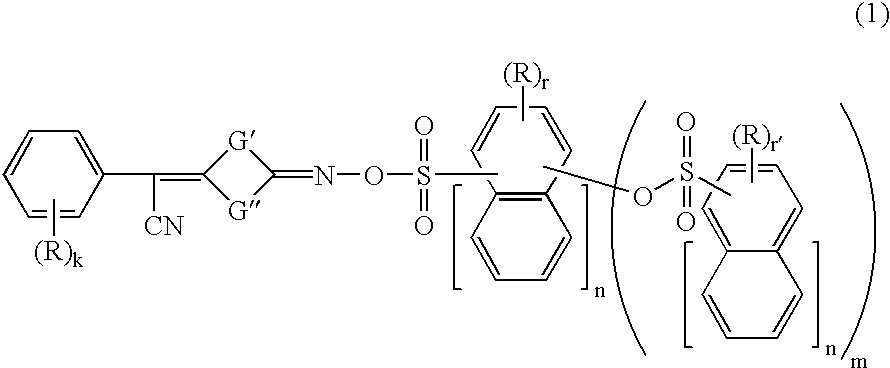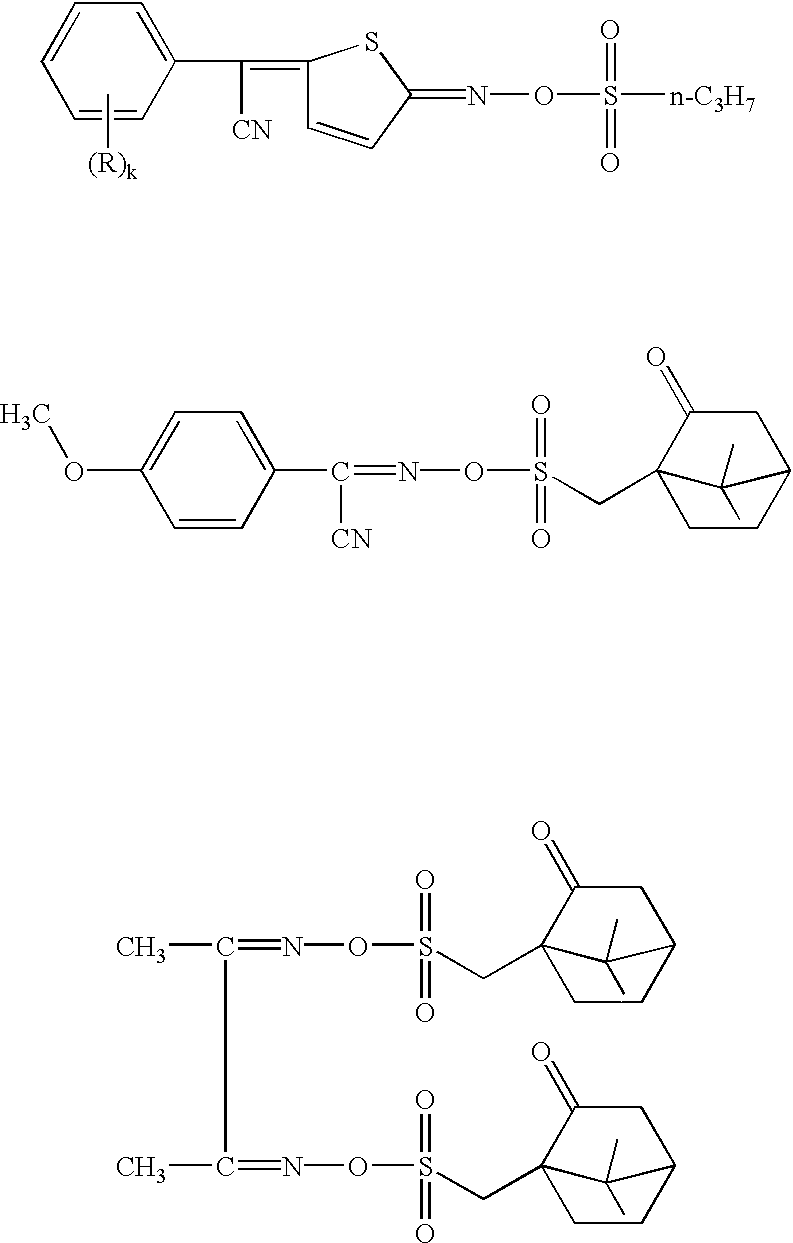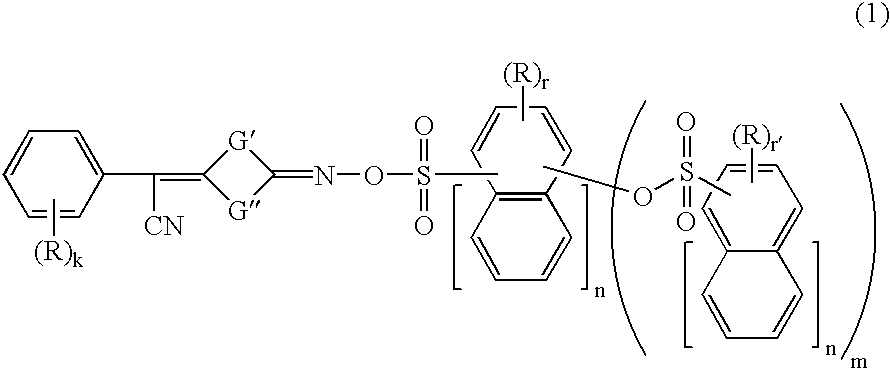Photoacid generators, chemically amplified resist compositions, and patterning process
- Summary
- Abstract
- Description
- Claims
- Application Information
AI Technical Summary
Benefits of technology
Problems solved by technology
Method used
Image
Examples
synthesis example 1
Synthesis of Sodium 4-(4′-methylphenylsulfonyloxy)benzenesulfonate
[0289]In 400 g of tetrahydrofuran and 250 g of water were dissolved 208 g (1.0 mol) of 4-phenolsulfonic acid hydrate and 191 g (1.0 mol) of p-toluenesulfonic acid chloride. With ice cooling and stirring, an aqueous sodium hydroxide solution (80 g (2.0 mol) of sodium hydroxide in 125 g of water) was added dropwise such that the temperature might not exceed 20° C. After the completion of dropwise addition, the solution was allowed to ripen for 2 hours at room temperature. To the reaction solution, 700 g of dichloromethane was added to help sodium 4-(4′-methylphenylsulfonyloxy)benzenesulfonate crystallize. The crystals were collected by filtration, washed with 200 g of dichloromethane, and dried in vacuum at 60° C. for 12 hours. The amount was 330 g (yield 94%).
synthesis example 2
Synthesis of Sodium 2,5-bis(4′-methylphenylsulfonyloxy)-benzenesulfonate
[0290]By substantially following Synthesis Example 1 except that 1.0 mol of potassium hydroquinonesulfonate was used instead of the phenolsulfonic acid and 2.5 mol of p-toluenesulfonic acid chloride was used, the end compound, sodium 2,5-bis(4′-methylphenylsulfonyloxy)benzenesulfonate was synthesized.
synthesis example 3
Synthesis of Sodium 6-(4′-methylphenylsulfonyloxy)-naphthalene-2-sulfonate
[0291]In 100 g of tetrahydrofuran and 80 g of water were dissolved 50 g (0.18 mol) of sodium 2,6-naphtholsulfonate hydrate and 33.8 g (0.18 mol) of p-toluenesulfonic acid chloride. With ice cooling and stirring, an aqueous sodium hydroxide solution (7.1 g (0.18 mol) of sodium hydroxide in 30 g of water) was added dropwise such that the temperature might not exceed 20° C. After the completion of dropwise addition, the solution was allowed to ripen for 2 hours at room temperature. To the reaction solution, 600 g of dichloromethane was added to help sodium 6-(4′-methylphenyl-sulfonyloxy)naphthalene-2-sulfonate crystallize. The crystals were collected by filtration, washed with 300 g of dichloromethane, and dried in vacuum at 60° C. for 12 hours. The amount was 62 g (yield 86%).
PUM
| Property | Measurement | Unit |
|---|---|---|
| Force | aaaaa | aaaaa |
| Magnetic field | aaaaa | aaaaa |
| Magnetic field | aaaaa | aaaaa |
Abstract
Description
Claims
Application Information
 Login to View More
Login to View More - Generate Ideas
- Intellectual Property
- Life Sciences
- Materials
- Tech Scout
- Unparalleled Data Quality
- Higher Quality Content
- 60% Fewer Hallucinations
Browse by: Latest US Patents, China's latest patents, Technical Efficacy Thesaurus, Application Domain, Technology Topic, Popular Technical Reports.
© 2025 PatSnap. All rights reserved.Legal|Privacy policy|Modern Slavery Act Transparency Statement|Sitemap|About US| Contact US: help@patsnap.com



